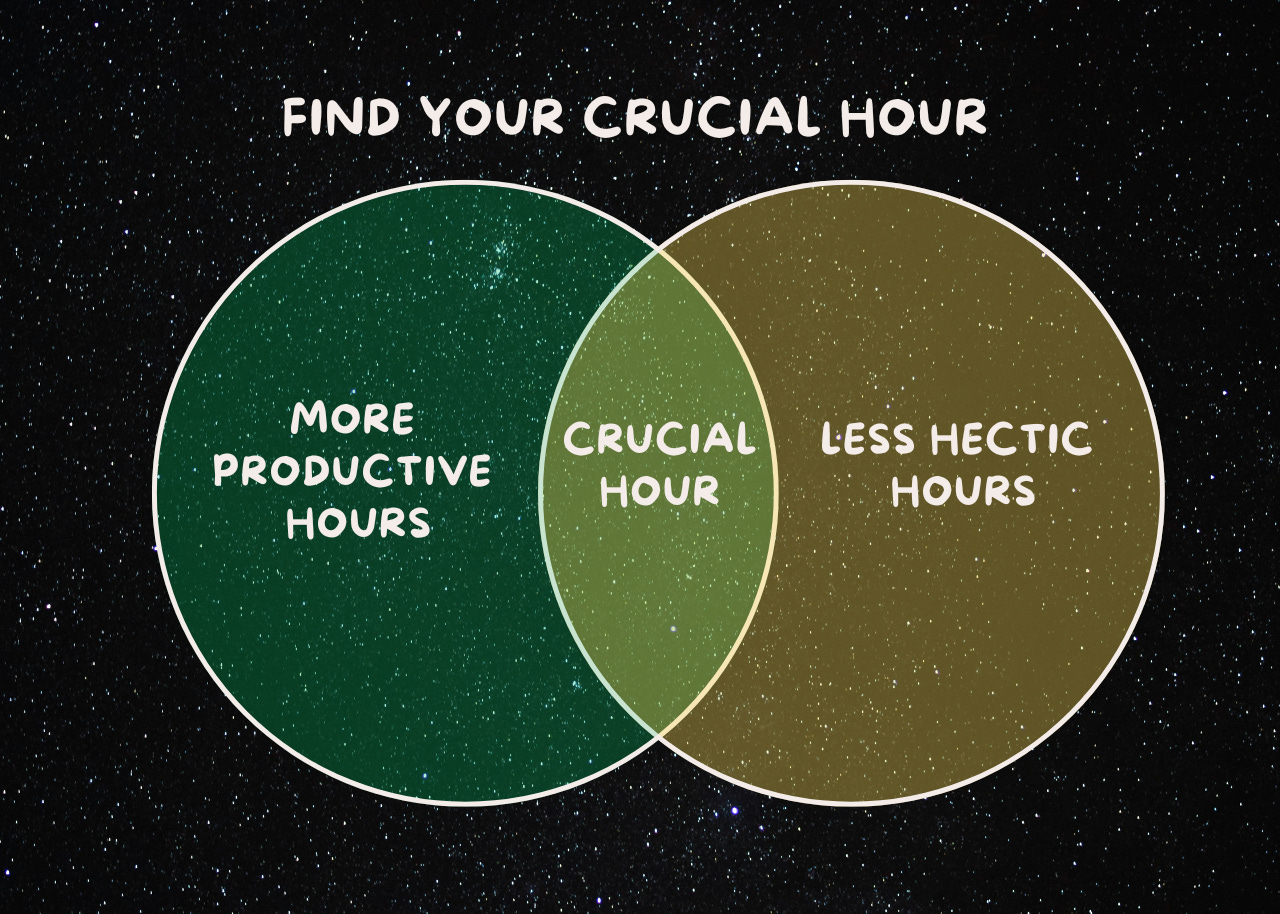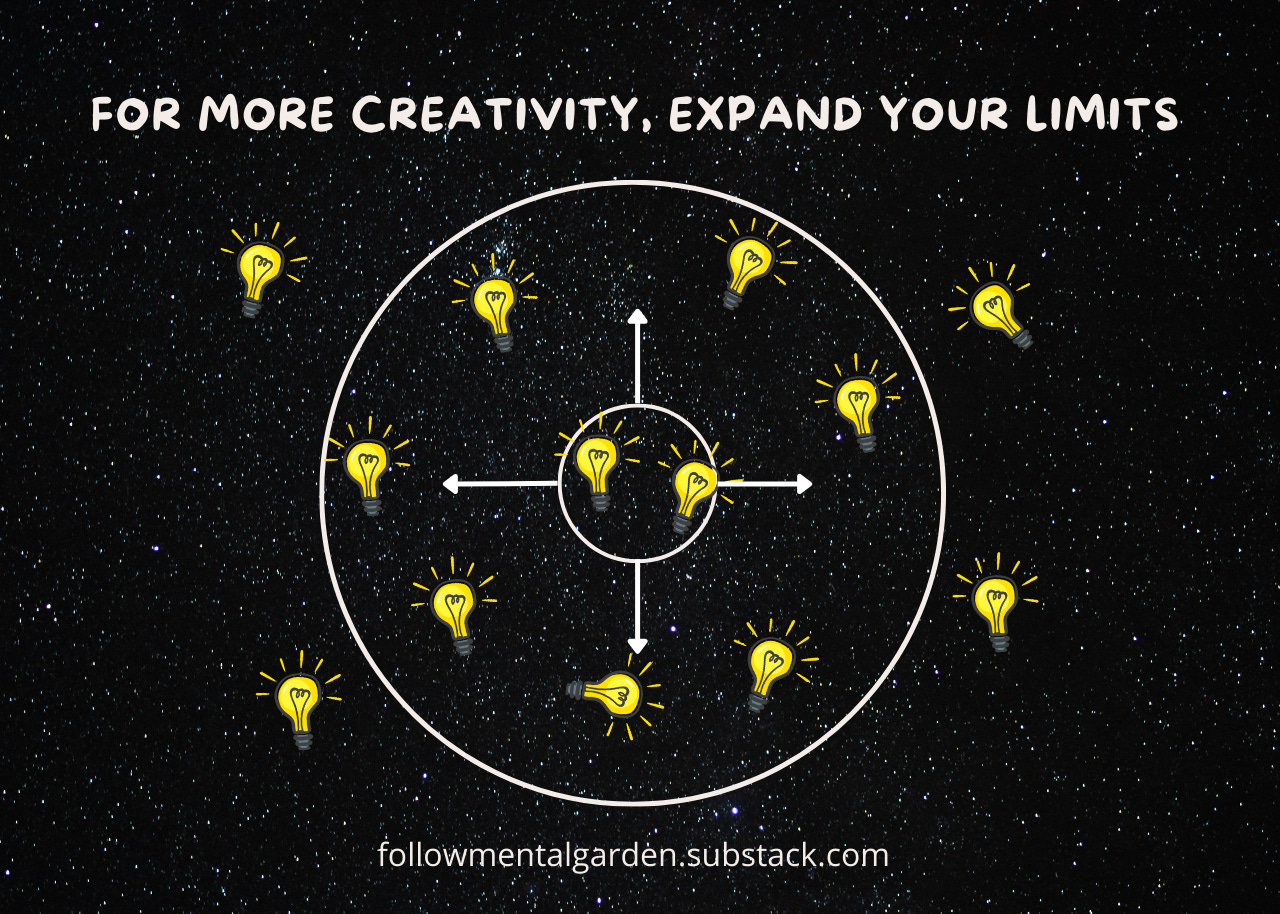7 techniques proven by science and great artists to increase creativity
Brilliant ideas are no coincidence
🏷️ Categories: Creativity.
Sitting in front of the screen with the intention of creating something magical and ending up just staring at the blinking cursor… It’s a more common experience than we like to admit.
We demand ourselves to be creative, original, brilliant.
But, ironically, that pressure suffocates exactly what we’re trying to ignite: the spark.
Creativity doesn’t come from waiting for inspiration to strike. It’s about designing a system that sparks it. If you want more and better ideas, let’s look at practical, proven methods—backed by science and real examples—that attract brilliant ideas.
And it starts like this…
1. Consume and collect good art
Just like we take care of our diet, we should care about what we mentally consume.
If you only consume fast, shallow, low-quality content, you can’t expect to produce anything different—it’s out of reach. To change that, consume good art. Art that forces you to pause. Art that lingers in your mind for days. Over time, like a healthy diet, the change becomes visible.
Every great work leaves a mark on you.
The next step is to digest what left a mark on you.
Austin Kleon explains this in Steal Like an Artist: it’s not about copying what you saw, but collecting, analyzing, and learning from other people’s work. Find that passage that resonated with you, that movie scene that moved you, that unforgettable song…
And when you find it, study it.
Take notes on what makes it work and use those insights as tools to combine and create.
Apply what you learn to your own creative process. Remember: creativity is combinatorial. The more pieces you have, the more combinations are possible. The more languages you speak, the more nuances you can express. Just like a balanced diet, your mental intake should be diverse. Seek out good art from all areas.
Confession: the writers who inspire my nonfiction… are fiction writers.
Don’t limit yourself when looking for good art.
2. Option Suppression Technique
By nature, we tend to simplify options: Black/white. Right/wrong. A/B.
In art, the same thing happens: we tend to see very few creative options when developing a project. To avoid that, use the Option Suppression Technique. That is, when considering possibilities, discard all cliché choices right away.
Italo Calvino suppressed traditional plot structures to allow impossible narratives. The best example is If on a Winter's Night a Traveler, where instead of a beginning, middle, and end, there’s a fragmented structure.
Julio Cortázar ditched linearity in Hopscotch so the reader could jump between chapters. He completely changed the very way a book can be read.
Georges Perec wrote A Void, an entire novel without using the letter "e".
Dr. Seuss wrote Green Eggs and Ham using only 50 unique words.
These self-imposed limits didn’t restrict creativity—they elevated it.
What if you did the opposite of what’s expected?
What if you changed the usual format?
What if you combined it with something that’s never been seen before?
Instead of having your main character escape through the door, make them climb out through the roof. If your story takes place in a city, set it in an underwater village where people communicate in peculiar ways. If you always write from an omniscient point of view, limit yourself to one character’s senses.
Weird answers often hide brilliant outcomes.
3. Walk
Great ideas show up at any time—except when you’re staring at the blank page.
A study from Stanford University showed that walking can increase creativity by up to 60%. Want an example? William Hamilton, a 19th-century mathematician, discovered quaternions (a revolution in math) while walking along a canal in Dublin (Cairbre, 2010).
You’ve probably had moments like that, too.
Walk without headpho1nes. Observe. Let your mind wander. The best connections happen when you’re not trying to force them. That’s when apophenia shows up—the unexpected connection of ideas that seem unrelated. Make walking a daily ritual.
Your creativity will thank you.
4. Collaborate
The idea of the solitary genius is a myth. Creativity is social (Uzzi & Spiro, 2005).
Beethoven had mentors like the renowned composer Joseph Haydn. The Beatles constantly challenged each other, and that dynamic sparked their creative growth (Meneses & Coulon, 2021). Collaboration is a catalyst because others see what you can’t—or ask questions you’d never think of.
What can you do?
Talk with other creators, listen carefully, and take notes. Share your unfinished ideas to get feedback. One conversation can unlock months of stagnation. You don’t have to co-write a book.
Just create a space where your process is enriched by someone else’s mind.
5. The Crucial Hour
You have a thousand tasks. A thousand responsibilities. If you don’t reserve time to create, it will never happen.
The Crucial Hour is a block of at least one hour, distraction-free, dedicated solely to the project that excites you. The one that’s not on your to-do list, but feeds your soul. You’ll find your Crucial Hour at the time of day when you’re least busy and most focused.
Block one hour each day on your calendar and protect it without excuses.
That’s when the magic happens. You enter flow by avoiding distractions and, day after day, session after session, those hours build a body of work and level of quality no burst of spontaneous motivation could ever match.
Even if you only have one hour a day—that’s more than enough. If you have more, even better.
6. Build a Routine Through Habits
Motivation is fleeting and inconsistent. But results require consistent effort…
We need habits. We can’t rely on motivation alone.
Kafka came home from work, slept, and wrote through the night. Every day.
Hemingway sat down to write at sunrise. Every day.
Murakami runs at dawn, then comes back and writes. Every day.
That habit is everything. When it’s part of your daily routine, there’s no decision to make—it’s already made. That eliminates procrastination. Push yourself to create every day, even if the result is mediocre. The result isn’t what matters—the process does. Because every day of intentional practice counts.
Quantity is what leads to quality.
7. Expand Your Horizons
You can’t keep writing from the same bubble.
Real creativity demands expanding your view of the world. Watch indie films. Study Eastern philosophy if you only know Western thought. Read books you’d never normally pick. Talk to people who think differently from you. Watch documentaries about agriculture if you usually write about tech.
Step outside the comfort zone of your information diet.
The broader your map, the more unexpected paths you’ll be able to connect.
So now you know—creativity isn’t a mystical flash. It’s the result of cultivating a fertile space for ideas. And today, you can start practicing differently. Today, you can nurture it in a new way. And this time, harvest extraordinary results.
✍️ Your turn: What other techniques or ideas do you use to stay creative?
💭 Quote of the day: “People who know how to creatively break the rules also know why the rules were there in the first place.” — Richard Rohr, Falling Upward
See you next time—stay inspired! 👋
References 📚
Cairbre, F. Ó. (2010). Twenty years of the Hamilton walk. Irish Mathematical Society Bulletin, 0065, 33-49. URL
Kleon, A. (2013). Steal Like an Artist: 10 Things Nobody Told You About Being Creative.
Meneses, P. L. C., & Coulon, A. M. S. (2021). Lennon y McCartney. Una amistad creativa. Panambí Revista de Investigaciones Artísticas. URL
Oppezzo, M., & Schwartz, D. L. (2014). Give your ideas some legs: The positive effect of walking on creative thinking. Journal Of Experimental Psychology. Learning, Memory, And Cognition, 40(4), 1142-1152. URL
Uzzi, B., & Spiro, J. (2005). Collaboration and Creativity: The Small World Problem. American Journal Of Sociology, 111(2), 447-504. URL







Good article. I would add to that last item about stepping beyond your usual information bubble to also step out your door and explore the actual world around you. Get away from the screens, books, and other formats of media transmission and touch, smell, feel, taste, and see the physical world around you. Maybe you take it for granted. It's always there. Sometimes it's annoying with its noise, air pollution, and frantic pace of people, but stop and experience it on a deeper level. Connect the world outside your door to the media world you usually consume.
Thanks for sharing these techniques. I particularly loved number 4: Collaborate! It is so much fun to create together!